

 Welcome back, in case you have been on holidays.
Welcome back, in case you have been on holidays.
There is in many situations a turning point when you know if things go in the right direction or not or from which point things are particularly important. It is around this time in the summer that this happens in the vineyards. Now we go into the final phases of the growing year for the vine. What happens now can make or break the vintage.
Terrible weather earlier in the year can be repaired by a glorious autumn. A splendid spring and summer can be destroyed by incessant rain during the harvest in September. The winegrower can never be guaranteed peace of mind at this time of the year.
This year has been difficult, unusual but not too bad, so far. Spring and early summer was generally very cold and wet in most parts of France. Vegetation was sometimes two or three weeks behind the usual development. But much of summer has been very good. Not exceedingly hot nor wet. There have been terrible problems in some areas with violent hailstorms, often causing great damage in the vineyards that were hit. But overall good.
Now we are crossing fingers that autumn will be good. Would it not be nice with a long warm autumn period? Then this could turn into a very good year. Many winegrowers are also hoping for big quantities after two years of rather small harvests.
We at BKWine are also hoping for a glorious autumn period. We are just going into our most hectic wine travel season. This coming weekend is the last weekend until the end of October that we are both, Britt and Per, at home over the weekend. We have a lot of different wine tours lined up for the next two or three months.
We will meet some of you, our readers, on them. And if we don’t meet you this autumn, we hope to meet you some other time. Perhaps on one of our wine tours?
So there are busy times ahead of us as well as for all wine makers!
And… don’t forget to take a look at our upcoming wine tour to Chile & Argentina and the one to South Africa. Two very special wine tours. More info below. Final date for bookings is approaching fast!
Britt & Per
PS: Recommend to your friends to read the Brief!
What’s on at BKWine Tours
- Bordeaux, 18-22 September (closed)
- Douro Valley, Portugal, 23-27 October (closed)
- South America: Chile and Argentina, 1-16 February 2014
- South Africa, 28 February – 10 March, 2014
- Douro Valley, Portugal, 14-18 May
For more information please contact us on email or on phone (we’re on French time), or go to our wine travel site on www.bkwinetours.com!
We also make custom designed wine tours – on-demand tours for you and a group of friends, for your company (maybe to scout new winegrowers?), for a special event… We can combine winery visits and wine touring with other activities: gastronomic workshops, visit to an oyster farm, truffles hunting, cheese making, and more. More info on the custom designed and bespoke BKWine wine tours and travel here!
Wine tours in Finnish: We also do wine tours in Finnish. And in German, Norwegian, Spanish…
Do you want the latest news and updates on our wine travel activity? Subscribe here! (Second alternative BKWineTours.com)
From the World of Wine
Sade Öküzgözü 2011, Kavaklidere, Turkey | Britt’s Wine of the Month
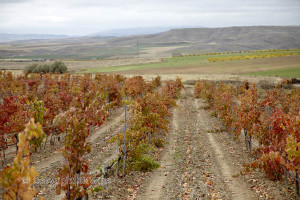 While visiting Vinexpo in Bordeaux in June I stopped at the Turkish stand and tasted some of their wines. Quite a few of them were good. I especially liked a wine called Sade Öküzgözü 2011 from the producer Kavaklidere Winery. The hard-to-pronounce Öküzgözü is the name of the Anatolian grape variety that the wine is made of.
While visiting Vinexpo in Bordeaux in June I stopped at the Turkish stand and tasted some of their wines. Quite a few of them were good. I especially liked a wine called Sade Öküzgözü 2011 from the producer Kavaklidere Winery. The hard-to-pronounce Öküzgözü is the name of the Anatolian grape variety that the wine is made of.
Kavaklidere was the first private wine producer in Turkey, founded in Ankara in 1929. Now it is one of Turkey’s leading wineries with its more than 600 hectares of vines. The vineyards are located in different places, among them the spectacular Cappadocia in central Turkey. 20% of the production is exported.
Sade Öküzgözü is aromatic and flavourful, which is typical of this grape from eastern Anatolia. The body is relatively light and the style is quite elegant. There is a lot of fruit, cherries and fresh red berries. More: www.kavaklidere.com
High or low density in the vineyard
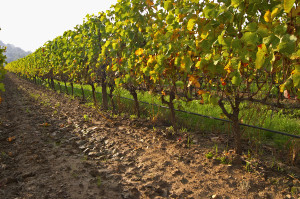 Wine growers talk about high and low yields in the vineyard. In Languedoc they have around 45 hectolitres per hectare, in Bordeaux 50 to 60 and in Champagne even higher. But when you talk about yield it is also important to know the planting density of the vineyard.
Wine growers talk about high and low yields in the vineyard. In Languedoc they have around 45 hectolitres per hectare, in Bordeaux 50 to 60 and in Champagne even higher. But when you talk about yield it is also important to know the planting density of the vineyard.
The density can vary between 1 500 and 10 000 vines per hectare. Some parts of Bordeaux (Médoc, Saint-Emilion, Pomerol), in Champagne and Burgundy (Côte d’Or) have a density of 8 000-11 000 vines per hectare. In really hot districts, where the competition for water is great, it can go down to 2000. The most common is a density of between 3,000 and 6,000 plants per hectare. The greater the distance between the rows, the higher the vines.
With the same yield you will have half as many grapes on each vine if you have 10,000 plants per hectare compared to if you have 5000. White grapes can cope with high yields better than red grapes. Among the red grapes cabernet sauvignon can cope with high yields better than pinot noir does.
Dates for the winter and spring wine tours
We are busy finalising all the details for the winter and spring wine tours. We have already fixed the dates but even if all the details are not yet settled we wanted to give you, reader of the BKWine Brief, early information about the dates.
Winter wine tours:
- Chile & Argentina in South America, 1-16 February
- South Africa, 28 Feb – 10 March
Book now for these wine tours! The booking deadline is approaching fast!
Spring wine tour:
- Douro Valley, Portugal, 14-18 May
The world of wine has many famous rivers. But the Douro is the most spectacular. A dramatically beautiful landscape, vineyards on break-neck slopes. This wine tour will cover both the classic port wines and the recently famous “table” wines from the Douro.
Keep your eyes open for more information.
Don’t forget, we also do custom designed wine tours!
Less oak means more fruit in the wine
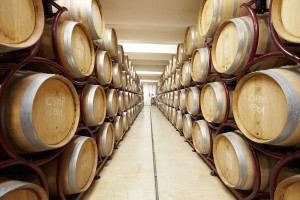 Sometimes it feels like every wine you drink is oaked. But the fact is that only 2% of all the world’s wines spend time in oak barrels, according to Drinks Business. And this is down from 3% in 2008. Nowadays winemakers want to stress the fruit so they reduce the time in oak and they buy less new barrels every year. In times of crisis, it is also a way to save some money. In addition, more and more wines are made for immediate consumption which means that oak aging is less important.
Sometimes it feels like every wine you drink is oaked. But the fact is that only 2% of all the world’s wines spend time in oak barrels, according to Drinks Business. And this is down from 3% in 2008. Nowadays winemakers want to stress the fruit so they reduce the time in oak and they buy less new barrels every year. In times of crisis, it is also a way to save some money. In addition, more and more wines are made for immediate consumption which means that oak aging is less important.
To cope with reduced demand the coopers offers customized toasting of the barrels for their clients.
Read more about the decrease in demand for barrels at Drinks Business.
In 2012 the French coopers sold in total more than 525,000 oak barrels. France is the world leader in oak barrels and 66% of the production is exported.
Sweet and delicious as well as red and delicious among the wines of Alsace
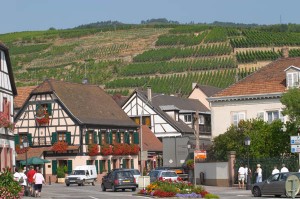 Alsace is primarily known for its elegant, stylish, often aromatic white wines. But they do much else there too. For example, the wonderfully intense sweet wines that can be called either vendange tardive (fairly sweet) or sélection de grains nobles (very sweet!). They even make some very good red wines from pinot noir. Britt explains more about these unusual Alsace wines on BKWine Magazine: The “other” Alsace: Sweet white wines and red wines.
Alsace is primarily known for its elegant, stylish, often aromatic white wines. But they do much else there too. For example, the wonderfully intense sweet wines that can be called either vendange tardive (fairly sweet) or sélection de grains nobles (very sweet!). They even make some very good red wines from pinot noir. Britt explains more about these unusual Alsace wines on BKWine Magazine: The “other” Alsace: Sweet white wines and red wines.
[divider_flat]
Black soil as good as white
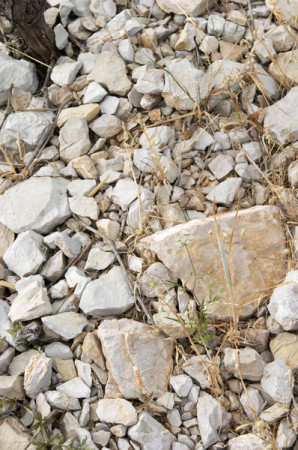 Schist deserves more respect. Wine growers in Anjou in the Loire Valley are a bit upset about the fact that limestone gets all the attention.
Schist deserves more respect. Wine growers in Anjou in the Loire Valley are a bit upset about the fact that limestone gets all the attention.
So they organized La Paulee de l ‘Anjou Noir on July 29 in Coteaux du Layon to honour the schist of Anjou. The message of the day was: Anjou is not just a simple, unpretentious wine, but also complex chenin blanc wines from grapes grown in black, blue and anthracite schist. Just think of a bone dry Savennières or a honey sweet Quart de Chaume.
Other regions in France also stress their schist soil. Faugères in Languedoc has made Terroirs de Schiste its slogan. In Faugères they say that grapes that grow in schist soil give flavourful wines, round in taste but with a distinct acidity and freshness. Schist also give low yields, says Bernard Vidal, owner of Château de la Liquière, one of Faugères most famous estates.
Other famous wine regions with schist is Priorato (Priorat) in Catalonia, the Mosel valley in Germany, the Douro in Portugal and parts of Roussillon in France.
Read more about La Paulée de l’Anjou Noir here: mon-viti.com.
[divider_flat]
Inspiring wine pictures and ten wine photo tips
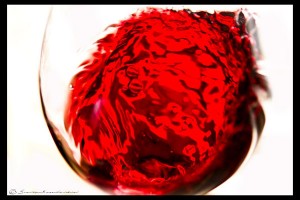 Sometimes people talk about food porn referring to photographs you see in those really fancy glossy magazines. There are some food blogs that also have very good pictures. But most blogs have pictures of a “variable” quality, not least wine blogs. I do not think I have ever heard someone talk about wine porn (at least not referring to photos). Perhaps not so surprising since most wine blogs write about wine and a wine bottle is a wine bottle. But there you are mistaken!
Sometimes people talk about food porn referring to photographs you see in those really fancy glossy magazines. There are some food blogs that also have very good pictures. But most blogs have pictures of a “variable” quality, not least wine blogs. I do not think I have ever heard someone talk about wine porn (at least not referring to photos). Perhaps not so surprising since most wine blogs write about wine and a wine bottle is a wine bottle. But there you are mistaken!
A brilliant example of that a wine bottle is not “just” a wine bottle is “The Svensson Taster” wine blog. It carries some very talented photography. Absolutely worth seeing. In a guest article by the Svensson Taster we feature a selection of his images.
We combine that with a bonus: BKWine’s very own Top Ten Tips on how to take better pictures yourself! Read more on BKWine Magazine: Excellent wine photography from a wine blog + Ten photography tips for better pictures. [divider_flat]
New on the travel blog
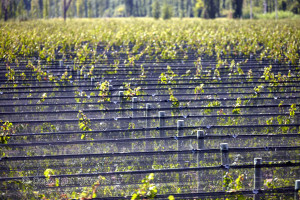 This month we also have quite a few new things on the travel blog. Let’s start with what some travellers have said:
This month we also have quite a few new things on the travel blog. Let’s start with what some travellers have said:
- “An exceptionally successful wine tour“
- “you’re incredibly professional”, “on a level of your own”
- The wine tour to Chile & Argentina: “What a smash hit! Amazing!”
- “perhaps the most delicious meal I’ve ever eaten”
We have also had a few mentions in media:
- EasierTravel.com picks up on our tours to South America and South Africa
- TheEpicureanExplorer.com
- James Halliday’s Australian Wine Companion
- Luxury.TravelMagazine.com
And some other new posts on the travel blog:
- Inspiration for Champagne: Travel to Champagne in the autumn?
- Some facts on the South African country: South Africa: a land of diversity, and of great wines
- A short introduction to the Douro: The Douro Valley region: wine land and vineyards
- A short introduction to the different kinds of port wine
Young Bordeaux wine champions
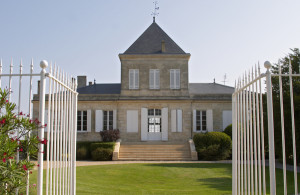 Bordeaux has found a way to get young wine lovers to take an interest in Bordeaux wines. Since a few years back La Commanderie du Bon Temps in Médoc, Graves and Sauternes organizes “The Left Bank Bordeaux Cup” for wine clubs at business schools and universities. Initially, the competition was only open to French and European schools. But now wine clubs from schools all the world compete for a place in the prestigious final held every June at Château Lafite-Rothschild in Pauillac.
Bordeaux has found a way to get young wine lovers to take an interest in Bordeaux wines. Since a few years back La Commanderie du Bon Temps in Médoc, Graves and Sauternes organizes “The Left Bank Bordeaux Cup” for wine clubs at business schools and universities. Initially, the competition was only open to French and European schools. But now wine clubs from schools all the world compete for a place in the prestigious final held every June at Château Lafite-Rothschild in Pauillac.
This year, 45 teams took part and most of them were eliminated during the year in local competitions. In the Bordeaux final 8 teams in total, from America, China, England, Denmark and France, competed. The winner was Cambridge University. Wharton came second and the Copenhagen Business School took the third place.
The Left Bank Bordeaux Cup is organised by La Commanderie du Bon Temps.
Choosing the right kind of yeast
An important decision for the winemaker is what kind of yeast he is going to use. First, should it be the “naturally” occurring yeast, or should he use cultured yeast? If he chooses the latter, there are many different varieties to choose from. Purists believe that the cultured yeast, adding yeast, is wrong, that it leads to uniform wines without any character of the soil in which the grapes were grown. But it is not necessarily true and cultured yeast can also have many benefits.
Read more in Britt’s article on BKWine Magazine: Yeast – selected or natural? [divider_flat]
A French nitrogen ban in the vineyards?
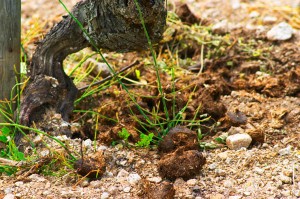 The French Ministry of Agriculture is discussing a decision to ban nitrogen fertilisation to farmland with an inclination of more than 15 %. This is to reduce nitrate emissions into the environment. This has naturally upset winegrowers in several regions. Wine growers probably use slopes more than other farmers.
The French Ministry of Agriculture is discussing a decision to ban nitrogen fertilisation to farmland with an inclination of more than 15 %. This is to reduce nitrate emissions into the environment. This has naturally upset winegrowers in several regions. Wine growers probably use slopes more than other farmers.
Regions like Champagne, Provence, Crozes-Hermitage, Sancerre, Alsace and several others will be affected by this decision. 40 % of Champagne, for example, would be affected. The prohibition would apply to both chemical fertilizers and natural fertilizers. Champagne’s comment to the Ministry of Agriculture is that the nitrogen supply in the vineyards is quite small but necessary to compensate for the competition that arises when you have planted grass between the rows. Grass is good for the environment and it reduces soil erosion on the slopes.
Read more about the possible ban on nitrogen in La Vigne
“Wine, the basics of wine”, a new wine book that does not quite convince
If you say in the introduction that you aim to make a different wine book because it will be based on facts presented by professionals, then you put the target high. You stick your chin out. Then, if the content turns out to be unconvincing in facts and in clarity and not infrequently debatable, then we cannot help but be rather disappointed. “Wine, the basics of wine ” by Filip Verheyden, Romana Eschensperger, and Fiona Morrison (translated by Anders Öhman into Swedish, the version we read) has a number of other good sides. It is elegant, attractive, easy to leaf through, a good introduction to the neophyte in some sections, inviting to browse (but unfortunately not good at facts)… Read more in Per’s book review on BKWine Magazine: Wine – a new wine book with ambition but that comes up short.
New original DAC in Austria: Wiener Gemischter Satz
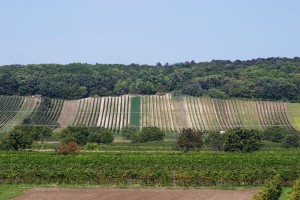 In Austria, they call their appellations DAC (Districtus Austriae Controllatus). The newest and ninth DAC has just been approved: Wiener Gemischter Satz. It is a strange appellation, or at least unusual appellation, perhaps even unique. The rules stipulate that the vineyard must be planted with at least three different varieties. To be precise: the grape varieties must be mixed in one and the same vineyard. In other words, it is not just the wine that must be a blend, it is also the planting the vineyard. The wine should always be dry and must not have a prominent oak character.
In Austria, they call their appellations DAC (Districtus Austriae Controllatus). The newest and ninth DAC has just been approved: Wiener Gemischter Satz. It is a strange appellation, or at least unusual appellation, perhaps even unique. The rules stipulate that the vineyard must be planted with at least three different varieties. To be precise: the grape varieties must be mixed in one and the same vineyard. In other words, it is not just the wine that must be a blend, it is also the planting the vineyard. The wine should always be dry and must not have a prominent oak character.
Learn more about this new DAC on Austrian Wine.
Act before it is too late. Save this excellent Bordeaux wine from oblivion!
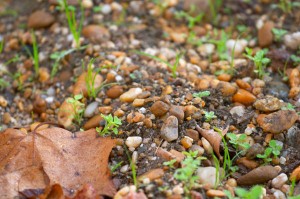 One of the best wines in Bordeaux is on its way to disappear. Production is in what seems to be permanent decline. Is it because there is no demand? Is it because the wine has been forgotten? Consumers no longer know about it? Or is it that it is being crowded out by another wine?
One of the best wines in Bordeaux is on its way to disappear. Production is in what seems to be permanent decline. Is it because there is no demand? Is it because the wine has been forgotten? Consumers no longer know about it? Or is it that it is being crowded out by another wine?
Since the seventies, production has fallen by around 80%. Today the production is very small. Now BKWine can reveal the truth, what it is that has led to that this excellent wine is almost forgotten.
Read Per’s article on BKWine Magazine: The tragic demise of one of Bordeaux’s great wines. We reveal the truth!
Declaring added sugar on the wine label or not? Sometimes?
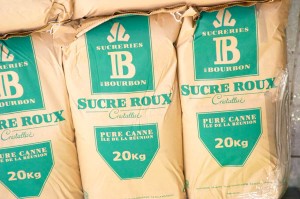 There is currently a lobbying effort in the EU regarding sugar in wine. The lobbyists want rules that would make it compulsory to mention “sugar added” on the label for wines that have been chaptalised (=adding beet or cane sugar to the must to increase the alcohol contents). But they do not think it is necessary to mention it on the label if the sugar (an equivalent kind of sugar) is added in the form of concentrated grape must. No prize for guessing that the lobbyists represent the producers of concentrated grape must.
There is currently a lobbying effort in the EU regarding sugar in wine. The lobbyists want rules that would make it compulsory to mention “sugar added” on the label for wines that have been chaptalised (=adding beet or cane sugar to the must to increase the alcohol contents). But they do not think it is necessary to mention it on the label if the sugar (an equivalent kind of sugar) is added in the form of concentrated grape must. No prize for guessing that the lobbyists represent the producers of concentrated grape must.
This raises a few questions. Should “sugar added” be compulsory on the label? If so when? And is it really necessary to add sugar in the first place? Personally I think it would make sense to have a mention on the label or even simply not allow adding sugar at all. Why?
Read the article on BKWine Magazine: The whole truth! Or just half the truth? Adding sugar to wine.
Wine events calendar
Send us an email if you have some event you want on the calendar.
Don’t be an egoist! Share with your friends and other wine enthusiasts! Forward the Brief to your friends! Suggest that they sign up for a free subscription !
© Copyright BKWine







